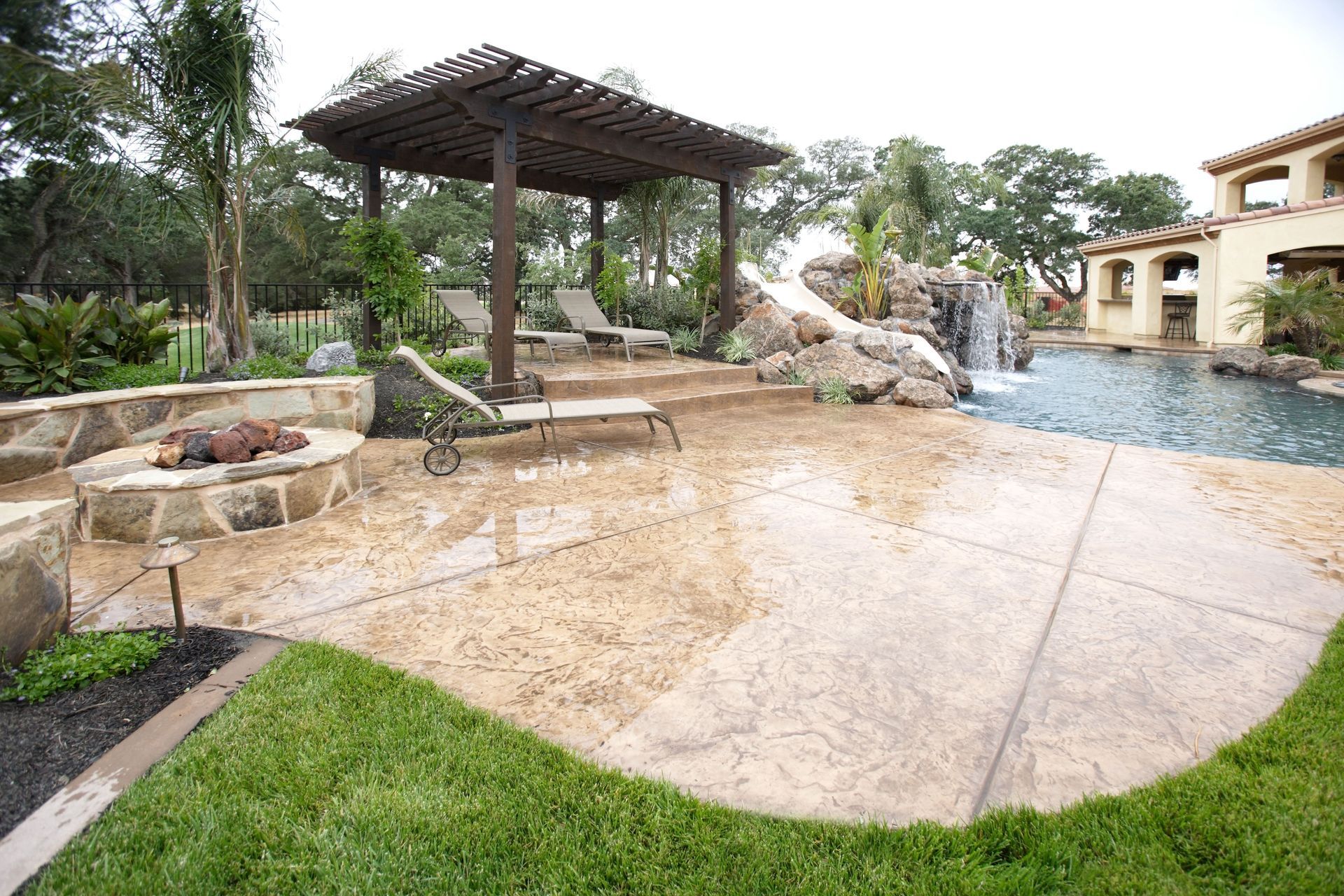November 6, 2025
Creating an outdoor space that is both functional and visually stunning requires thoughtful planning and professional execution. While landscaping often takes center stage with lush greenery and vibrant flowers, the hard elements—such as patios, retaining walls, walkways, and outdoor kitchens—form the backbone of a truly cohesive design. Choosing the right hardscaping services for your next project can make all the difference between an outdoor space that simply looks good and one that elevates your property’s value, durability, and year-round usability.
Understanding the Role of Hardscaping in Outdoor Design
Hardscaping refers to the non-living, structural components of an outdoor environment—everything from stone pathways to retaining walls, decks, fences, and water features. These elements define movement, establish boundaries, and create zones for recreation or relaxation. Professional hardscaping services blend artistry with engineering, ensuring that each stone, paver, or wall is both aesthetically pleasing and structurally sound.
One of the biggest advantages of hardscaping is its ability to reduce maintenance while increasing usability. Unlike lawns or flower beds that require frequent watering and trimming, hard surfaces are relatively easy to maintain. For instance, a properly installed patio not only offers a durable space for entertainment but also improves drainage and prevents soil erosion. When homeowners work with qualified hardscaping professionals, they benefit from precision design and technical expertise that extend beyond simple installation. Skilled contractors assess soil conditions, slope, drainage patterns, and local climate before
beginning any work, ensuring that the final result is both beautiful and resilient.
Hardscaping services are also pivotal in increasing property value. Stone walkways, modern fire pits, and decorative retaining walls create a sense of permanence that appeals to potential buyers. In many cases, these installations become key focal points, complementing the surrounding greenery and enhancing curb appeal.
Exploring Key Considerations When Selecting a Hardscaping Professional
Selecting a contractor for hardscaping services requires more than a quick internet search. Homeowners should evaluate credentials, portfolio quality, client reviews, and materials expertise before making a final decision. The process begins by clearly defining the project scope. Whether the goal is to install a flagstone patio or build an elaborate outdoor kitchen, knowing the desired outcome helps contractors provide accurate quotes and realistic timelines.
Another critical factor is design experience. Quality hardscaping is not just about laying stone or brick—it’s about understanding proportion, balance, and harmony with existing landscape elements. A skilled designer knows how to use textures and materials to create depth and contrast, integrating hard surfaces seamlessly into natural surroundings. Homeowners should always request to view previous projects or visit completed worksites to gauge craftsmanship and style consistency.
Budget is another area that demands careful attention. While it can be tempting to choose the lowest bid, cost should never be the sole determining factor. Poorly executed hardscaping can lead to cracking, uneven settling, or drainage issues that require expensive repairs down the line. Instead, focus on long-term value—durable materials and expert installation often save money over time.
According to Ruby Home, approximately 647,741 landscaping businesses are operating across the United States, highlighting how saturated the market has become. With so many providers available, selecting the right professional requires discernment. The best companies distinguish themselves through craftsmanship, design innovation, and customer service rather than sheer volume or low pricing.
Evaluating Design, Materials, and Durability
The success of a hardscape project lies largely in the materials chosen and how they are implemented. Stone, brick, concrete, and pavers all have unique characteristics, each influencing the project’s aesthetic and longevity. For example, natural stone offers timeless appeal but can be more expensive, while concrete pavers provide versatility at a lower cost. A reputable provider of hardscaping services will guide clients through these decisions, explaining how each material performs under local climate conditions.
Durability is especially important in regions prone to freeze-thaw cycles. Materials that absorb too much moisture can crack or shift over time. Experienced installers mitigate these risks through proper base preparation, compaction, and drainage design. They may also apply sealants to protect surfaces from weathering, staining, and UV exposure.
Beyond materials, layout and design are critical to ensuring long-term satisfaction. Professionals use tools like computer-aided design (CAD) software to visualize patterns and simulate how elements will appear once installed. These renderings allow homeowners to make informed adjustments before construction begins, avoiding costly mid-project changes.
Attention to drainage cannot be overstated. A well-designed hardscape directs water away from foundations and living areas, reducing the likelihood of erosion or basement leaks. Incorporating subtle slopes and permeable materials not only improves functionality but also supports eco-friendly water management.
Moreover, sustainability has become an increasingly important factor for many property owners. The best hardscaping services are those that integrate environmentally responsible practices—such as using recycled pavers, locally sourced materials, or permeable surfaces that allow water infiltration. These solutions balance aesthetics with environmental stewardship, helping homeowners reduce runoff and preserve natural ecosystems.
Maximizing Functionality and Aesthetic Value
An effective hardscape design enhances how outdoor spaces are used. Patios extend living areas, retaining walls double as seating, and pathways improve accessibility and flow. When designed strategically, these features transform an ordinary backyard into an inviting retreat for family gatherings or social events.
Lighting is another often-overlooked component that adds both functionality and ambiance. Low-voltage LED lights can be embedded in steps or walls to improve safety while creating a warm, welcoming glow. Similarly, incorporating fire features such as fire pits or fireplaces extends outdoor usability into cooler months, providing both heat and visual appeal.
A professional hardscaping team collaborates closely with clients to ensure that every element aligns with their lifestyle and preferences. For instance, homeowners who love entertaining may prioritize open patios and built-in grills, while those seeking tranquility might prefer water features or shaded pergolas. Through this personalized approach, hardscaping services deliver tailored designs that balance practicality with creative expression.
Color and texture selection also play a pivotal role. Contrasting materials can define zones within a single space—for example, a mix of smooth pavers for dining areas and rough stone borders for gardens. The result is a cohesive design that enhances visual interest without overwhelming the natural beauty of the surroundings.
Maintenance planning should be part of the design phase as well. Professionals can recommend easy-to-clean materials, proper sealants, and layout options that simplify upkeep. With thoughtful planning, homeowners can enjoy their hardscape for decades with minimal effort.
Considering Long-Term Benefits and Return on Investment
Investing in professional hardscaping yields substantial long-term rewards. Beyond immediate visual appeal, these installations contribute significantly to property value. Outdoor living areas continue to be one of the most sought-after features among homebuyers, and durable hardscapes stand as a testament to quality craftsmanship.
Functionally, hardscaping minimizes the need for watering, mowing, and other maintenance tasks associated with traditional landscaping. Homeowners save both time and resources while enjoying cleaner, more organized spaces. Features like stone walls or raised planters also protect plants from soil erosion and foot traffic, promoting healthier vegetation.
Another advantage lies in the resilience of professionally installed structures. When built correctly, patios and retaining walls can withstand years of exposure to heavy use and extreme weather. This durability makes hardscaping a sustainable choice that aligns with modern preferences for long-lasting, low-maintenance property improvements.
Selecting the right professionals for your outdoor renovation project requires careful research, creativity, and foresight. By evaluating credentials, materials, design sensibility, and sustainability practices, homeowners can ensure their investment delivers lasting results.
Hardscaping services are far more than simple installations—they represent a collaboration between artistry and engineering that transforms spaces into functional works of art. With expert craftsmanship, durable materials, and an understanding of environmental context, your next project can redefine how you experience and enjoy your property for years to come. Contact Modern Landscaping Inc today to schedule a consultation and bring your hardscaping vision to life.





